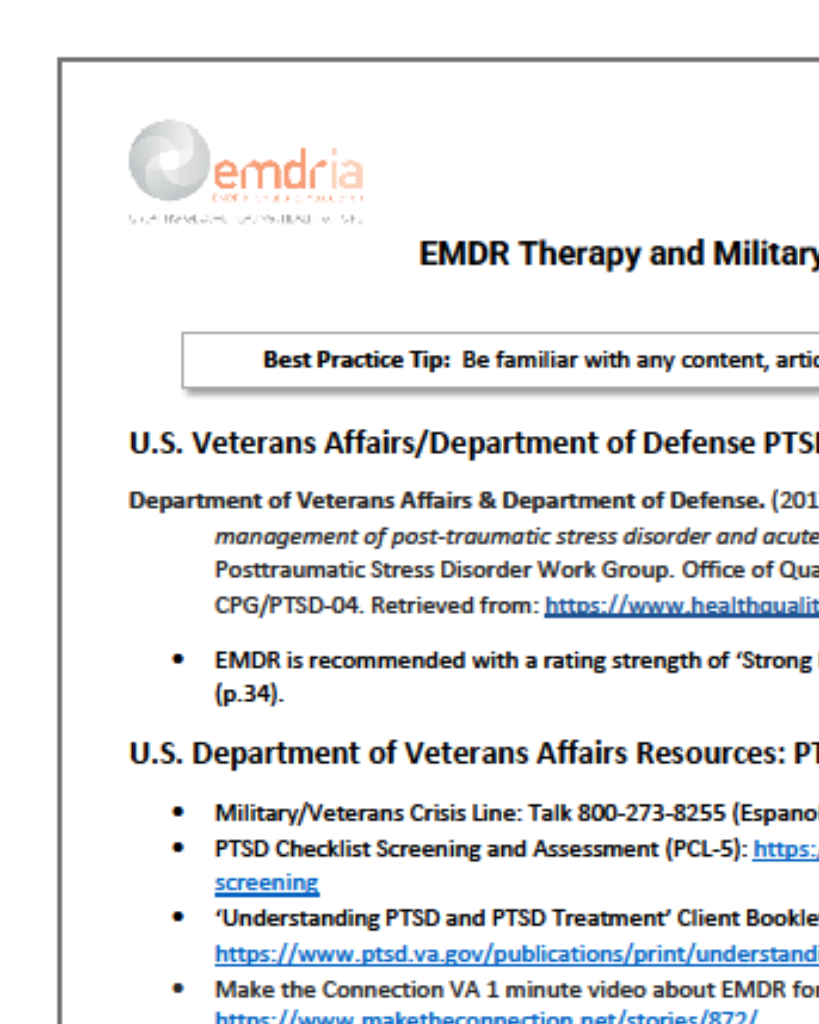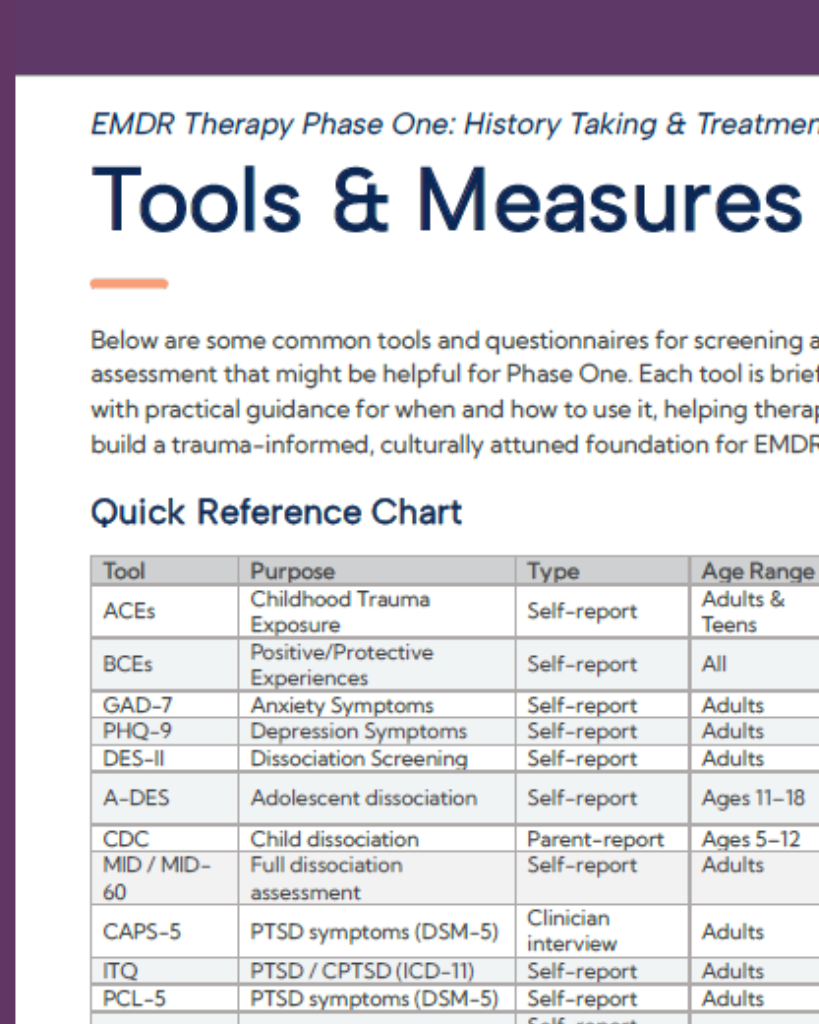The effect of twice-weekly versus once-weekly sessions of either imagery rescripting or eye movement desensitization and reprocessing for adults with PTSD from childhood trauma (IREM-Freq): A study protocol for an international randomized clinical trial
Comparison treatment outcomes of twice-weekly versus once-weekly sessions of two treatments for PTSD related to childhood trauma.
Article Abstract
“Background: Trauma-focused treatments for posttraumatic stress disorder (PTSD) are commonly delivered either once or twice a week. Initial evidence suggests that session frequency affects treatment response, but very few trials have investigated the effect of session frequency. The present study’s aim is to compare treatment outcomes of twice-weekly versus once-weekly sessions of two treatments for PTSD related to childhood trauma, imagery rescripting (ImRs) and eye movement desensitization and reprocessing (EMDR). We hypothesize that both treatments will be more effective when delivered twice than once a week. How session frequency impacts treatment response, whether treatment type moderates the frequency effect, and which treatment type and frequency works best for whom will also be investigated.
Methods: The IREM-Freq trial is an international multicenter randomized clinical trial conducted in mental healthcare centers across Australia, Germany, and the Netherlands. We aim to recruit 220 participants, who will be randomized to one of four conditions: (1) EMDR once a week, (2) EMDR twice a week, (3) ImRs once a week, or (4) ImRs twice a week. Treatment consists of 12 sessions. Data are collected at baseline until one-year follow-up. The primary outcome measure is clinician-rated PTSD symptom severity. Secondary outcome measures include self-reported PTSD symptom severity, complex PTSD symptoms, trauma-related cognitions and emotions, depressive symptoms, dissociation, quality of life, and functioning. Process measures include memory, learning, therapeutic alliance, motivation, reluctance, and avoidance. Additional investigations will focus on predictors of treatment outcome and PTSD severity, change mechanisms of EMDR and ImRs, the role of emotions, cognitions, and memory, the optimization of treatment selection, learned helplessness, perspectives of patients and therapists, the network structure of PTSD symptoms, and sudden treatment gains.
Discussion: This study will extend our knowledge on trauma-focused treatments for PTSD related to childhood trauma and, more specifically, the importance of session frequency. More insight into the optimal session frequency could lead to improved treatment outcomes and less dropout, and in turn, to a reduction of healthcare costs. Moreover, the additional investigations will broaden our understanding of how the treatments work and variables that affect treatment outcome.”
—Description from publisher
Article Access
Open Access
Wibbelink, C. J. M., Lee, C. W., Bachrach, N., Dominguez, S. K., Ehring, T., van Es, S. M., Fassbinder, E., Kohne, S., Mascini, M., Meewisse, M-L., Menninga, S., Morina, N., Rameckers, S. A., Thomaes, K., Walton, C. J., Wigard, I. G., & Arntz, A. (2021). The effect of twice-weekly versus once-weekly sessions of either imagery rescripting or eye movement desensitization and reprocessing for adults with PTSD from childhood trauma (IREM-Freq): A study protocol for an international randomized clinical trial. BMC Trials, 22, 848. Open access: https://doi.org/10.1186/s13063-021-05712-9
Date
November 27, 2021
Topics
Childhood Trauma, Complex Trauma/C-PTSD, PTSD
Practice & Methods
Comparative Studies
Extent
22 pages
Publisher
BMC
Rights
© The Author(s). 2021 Open Access This article is licensed under a Creative Commons Attribution 4.0 International License, which permits use, sharing, adaptation, distribution and reproduction in any medium or format, as long as you give appropriate credit to the original author(s) and the source, provide a link to the Creative Commons licence, and indicate if changes were made. The images or other third party material in this article are included in the article's Creative Commons licence, unless indicated otherwise in a credit line to the material. If material is not included in the article's Creative Commons licence and your intended use is not permitted by statutory regulation or exceeds the permitted use, you will need to obtain permission directly from the copyright holder. To view a copy of this licence, visit http://creativecommons.org/licenses/by/4.0/. The Creative Commons Public Domain Dedication waiver (http://creativecommons.org/publicdomain/zero/1.0/) applies to the data made available in this article, unless otherwise stated in a credit line to the data.
APA Citation
Wibbelink, C. J. M., Lee, C. W., Bachrach, N., Dominguez, S. K., Ehring, T., van Es, S. M., Fassbinder, E., Kohne, S., Mascini, M., Meewisse, M-L., Menninga, S., Morina, N., Rameckers, S. A., Thomaes, K., Walton, C. J., Wigard, I. G., & Arntz, A. (2021). The effect of twice-weekly versus once-weekly sessions of either imagery rescripting or eye movement desensitization and reprocessing for adults with PTSD from childhood trauma (IREM-Freq): A study protocol for an international randomized clinical trial. BMC Trials, 22, 848. Open access: https://doi.org/10.1186/s13063-021-05712-9
Audience
EMDR Therapists, Other Mental Health Professionals
Language
English
Content Type
Article, Peer-Reviewed, RCT





